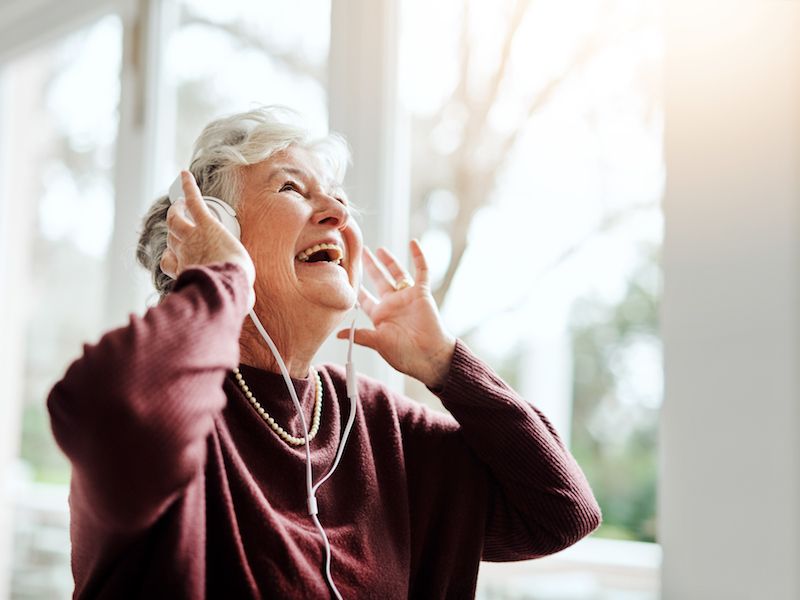
People who work in loud settings like construction sites or at heavy metal concerts are not the only people impacted by noise related loss of hearing. It doesn’t even need to be work-related, leisure-related noise exposure can be dangerous, also. What kind of exposure are we dealing with? Loud sounds heard through headphones, whether it be gaming, streaming video, music, or even an audiobook with the volume cranked up.
You may be surprised to find out that a mobile device can get that loud. The ordinary pain threshold for human hearing is around 150 db which is in the range of these devices. This is the volume at which noise starts to literally cause pain in your ears. So what’s the plan to protect against this kind of noise-related loss of hearing?
It’s significant here to think about the volume. An easy shorthand that’s widely recommended is the 60/60 rule: Listen with the volume at or below 60% for 60 minutes or less at a stretch (because how long you listen for matters, too).
Your Hearing Aids Can be Set up For Listening to Music
Make sure, if you’re wearing hearing aids, you don’t attempt to drown out other sounds by turning your streaming music up too high. And there are much healthier ways to listen to music so ask us about that as well. Hearing aids aren’t created to make music clearer like they do with voices so if really like music, you may have discovered this. While enjoying music, we can most likely make some adjustments to help enhance the quality of sound and lessen the feedback.
How to Choose The Best Headphones
If you don’t own hearing aids, there are a lot of choices for getting headphones. There are a few things to think about, even though it’s mostly a matter of personal choice.
Over-the-Ear Headphones
While the foam-covered speakers that came with your old Walkman are mostly a thing of the past, over-the-ear headphones have made a comeback. Often surprisingly high-priced, they offer a large variety of color possibilities and celebrity endorsements, and of course, better sound quality. And unlike those little foam pads, these go over the entire ear, limiting outside noises.
Conventional wisdom is that these are less dangerous than in-ear headphones because the source of the sound is further away from your eardrum. But because the speakers are bigger they are usually capable of much louder volume. Noise cancellation can be a helpful thing as long as you’re not missing useful sounds like an oncoming car or truck. Having said that, because they block out outside noise, you can typically reduce the volume of what you’re listening to so it’s not so loud that it will hurt your ears.
Earbuds
The standard earbuds that come with devices like iPhones are much maligned for their inferior sound quality, but because they come along with your phone lots of people still use them. Especially, with newer Apple phones, it’s just easier to use the earbuds which were provided with the device because it most likely won’t have a headphone jack.
Earbuds also don’t block out sound so the drawback is, you tend to turn up the volume. Again, though it’s frequently said that earbuds are problematic because you put them in your ear so their speakers are extremely close to your eardrum, volume is really the biggest problem.
Earbuds That Block External Sound
Many people choose earbuds with a rounded, rubbery tip both because they’re more comfortable than standard earbuds and better at stopping outside sounds. A seal that stops outside sound from entering is formed by the rubber tip which molds to the shape of the ear. Not to sound like a broken record, but these types of earbuds have the same downsides as the other two (it’s all about the volume), as well as carrying the same caution as over-the-ear headphones (they can block out warning sounds). Needless to say, these won’t work for you if you wear hearing aids.
A number of pairs may have to be tested before you find headphones that meet your needs. Depending on what you regularly use them for say talking on the phone, versus listening to music, you’ll have unique acoustic expectations. The significant thing is to find headphones that make it comfortable for you to listen at a safe and secure volume.
How to be Sure Your Hearing is Protected
How can you be certain it’s okay? There’s an app for that…If you use a smartphone, you can download the National Institute for Occupational Safety and Health’s free Sound Level Meter app. You can get different apps, but research has discovered that the accuracy of these other apps is hit-and-miss (in addition, for reasons yet unknown, Android-based apps have proven to be less precise). That motivated NIOSH to create their own app. The app lets you measure outside sounds, but sounds coming from your device’s speakers can be measured too, so you will know exactly how much volume your ears are getting. You have to put in a little effort, but taking these types of preventative measures can help protect your hearing.
